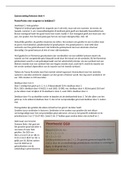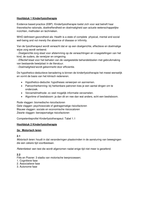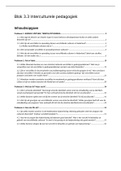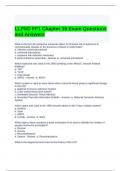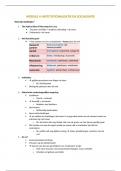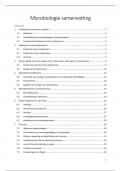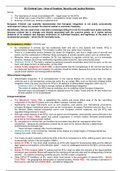Table of Contents
Chapter 1: Lesson 1 – The Rich don’t work for money...............................................................1
Chapter 2: Lesson 2 – Why teach financial literacy?.................................................................1
Chapter 3: Lesson 3 – Mind your own business.........................................................................2
Chapter 4: Lesson 4 – History of taxes and the power of corporations......................................3
Chapter 5: Lesson 5 – The rich invent money............................................................................4
Chapter 6: Lesson 6 – Work to learn, don’t work for money.....................................................5
Chapter 7: Overcoming obstacles.............................................................................................6
Chapter 8: Getting started.......................................................................................................7
Chapter 9: Still want more? Here are some to do’s...................................................................9
Chapter 1: Lesson 1 – The Rich don’t work for money
People’s lives are forever controlled by two emotions: fear and greed. The
fear without money motivates us to work hard, then once we get the
paycheck, the greed starts us thinking about the wonderful things that
money can buy.
It is wise to use current assets to generate more money and use
imaginations to identify an opportunity to make money. For example, open
an old comic shop, take daily fees but do not allow the kids to take the
comics home. The money generated can allow you to buy new comics, more
kids will come and you will have more money and build up your assets
column.
Chapter 2: Lesson 2 – Why teach financial literacy?
It’s not how much money you make, but rather, how much money you can
keep
spend money wisely, because “a fool and his money is one big party”.
Plus, a person can be highly educated, professionally successful, and
financially illiterate.
, “Assets put money in my pocket, liabilities take money out of my pocket”. A
house is, therefore, a liability and not an asset. Cashflow tells the story of
how a person handles money. A poor and middle class rely on one income
but spend on a lot of expenses, therefore, their liabs are usually higher than
assets.
Wealth is a person’s ability to survive so many number of days forward –
or, if I stopped working today, how long can I survive? Wealth measures
how much money your money is making, therefore, your financial
survivability. Therefore, the reinvestment process should be continued, and
we should have multiple sources of income, instead of relying solely on one
single paycheck.
Chapter 3: Lesson 3 – Mind your own business
There is a big difference between a profession and business. Profession is
what you study and work for. Business is something that you own and make
your wealthier.
Keep your daily job but start buying real assets – or investing. Examples
would include stocks, bonds, businesses that do not require my presence,
income-generating real estate, notes (IOUs), royalties from intellectual
property (music, scripts, patents), anything has value, produce income or
appreciates that already has a market.
The rich build their asset column first, whereas the middle and poor buy
luxuries first. Make sure you buy luxuries from the money that come from
your assets, not your daily dose of work. Don’t’ buy luxuries with your
sweat, blood, tears and children inheritance.
Chapter 1: Lesson 1 – The Rich don’t work for money...............................................................1
Chapter 2: Lesson 2 – Why teach financial literacy?.................................................................1
Chapter 3: Lesson 3 – Mind your own business.........................................................................2
Chapter 4: Lesson 4 – History of taxes and the power of corporations......................................3
Chapter 5: Lesson 5 – The rich invent money............................................................................4
Chapter 6: Lesson 6 – Work to learn, don’t work for money.....................................................5
Chapter 7: Overcoming obstacles.............................................................................................6
Chapter 8: Getting started.......................................................................................................7
Chapter 9: Still want more? Here are some to do’s...................................................................9
Chapter 1: Lesson 1 – The Rich don’t work for money
People’s lives are forever controlled by two emotions: fear and greed. The
fear without money motivates us to work hard, then once we get the
paycheck, the greed starts us thinking about the wonderful things that
money can buy.
It is wise to use current assets to generate more money and use
imaginations to identify an opportunity to make money. For example, open
an old comic shop, take daily fees but do not allow the kids to take the
comics home. The money generated can allow you to buy new comics, more
kids will come and you will have more money and build up your assets
column.
Chapter 2: Lesson 2 – Why teach financial literacy?
It’s not how much money you make, but rather, how much money you can
keep
spend money wisely, because “a fool and his money is one big party”.
Plus, a person can be highly educated, professionally successful, and
financially illiterate.
, “Assets put money in my pocket, liabilities take money out of my pocket”. A
house is, therefore, a liability and not an asset. Cashflow tells the story of
how a person handles money. A poor and middle class rely on one income
but spend on a lot of expenses, therefore, their liabs are usually higher than
assets.
Wealth is a person’s ability to survive so many number of days forward –
or, if I stopped working today, how long can I survive? Wealth measures
how much money your money is making, therefore, your financial
survivability. Therefore, the reinvestment process should be continued, and
we should have multiple sources of income, instead of relying solely on one
single paycheck.
Chapter 3: Lesson 3 – Mind your own business
There is a big difference between a profession and business. Profession is
what you study and work for. Business is something that you own and make
your wealthier.
Keep your daily job but start buying real assets – or investing. Examples
would include stocks, bonds, businesses that do not require my presence,
income-generating real estate, notes (IOUs), royalties from intellectual
property (music, scripts, patents), anything has value, produce income or
appreciates that already has a market.
The rich build their asset column first, whereas the middle and poor buy
luxuries first. Make sure you buy luxuries from the money that come from
your assets, not your daily dose of work. Don’t’ buy luxuries with your
sweat, blood, tears and children inheritance.



